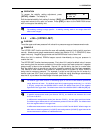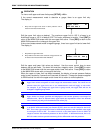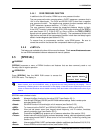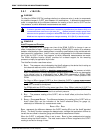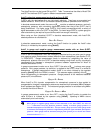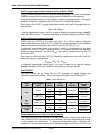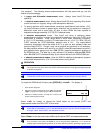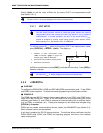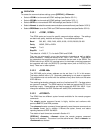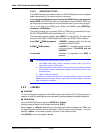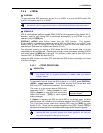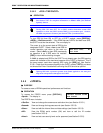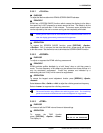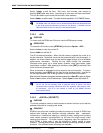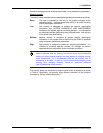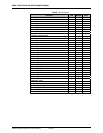
3. OPERATION
Page 63 © 2004-2007 DH Instruments, a Fluke Company
OPERATION
To access the communications settings, press [SPECIAL], <2Remote>.
• Select <1COM1> to view and edit COM1 settings (see Section 3.5.2.1.).
• Select <2COM2> to view and edit COM2 settings (see Section 3.5.2.1.).
• Select <3IEEE> to view and edit IEEE-488 settings (see Section 3.5.2.2).
• Select <4format> to select the remote communications command format (see Section 3.5.2.3).
• Select <5RS232test> to run the COM1 and COM2 communications test (see Section 3.5.2.4).
3.5.2.1 <1COM1, 2COM2>
The COMx ports can be set for specific communications settings. The settings
are baud rate, parity, data bits and stop bits. The available options are:
Baud 300, 600, 1 200, 2 400, 4 800, 9 600, 19 200, 28 800, 38 400
Parity NONE, ODD or EVEN
Length 7 or 8
Stop Bit 1 or 2
The default is <2 400, E, 7,1> for both COM1 and COM2.
The user can also specify one or two termination characters as well as define
these characters. These are referred to as “Term1” and “Term2”. These define
the characters that mark the end of commands that are sent to the RPM4. The
RPM4 looks for an ASCII(13) (carriage return) to terminate a received command
but responds with both and ASCII(13) (carriage return) and an ASCII(10) (line
feed). There are no other options.
3.5.2.2 <3IEEE-488>
The IEEE-488 port’s primary address can be set from 1 to 31 in this screen.
The factory default value is 10. Secondary addressing is not used or supported.
This address must not conflict with the address of any other device on the same
IEEE-488 bus.
The receiving terminating character must be a line feed and EOI. Carriage returns
are ignored if received. The RPM4 sends a line feed and asserts the EOI line to
terminate a reply. These settings are fixed to agree with IEEE Std. 488.2. If you
change the address, the IEEE interface will reset (PON) and become idle.
3.5.2.3 <4FORMAT>
The RPM4 has two different syntax formats available for the remote program
commands.
The classic remote command format is highly intuitive and conforms with
previous DHI PPC and RPM products.
The enhanced remote command format generally uses the same commands as
the classic format, but in addition it follows the syntax, format, and status
reporting features of IEEE Std 488.2.
The details of each format are covered in Section 4.3.
[SPECIAL], <2remote>, <4format> allows the remote program command
syntax to be selected. The cursor is on the active format. Select <1classic> or
<2enhanced> as desired.



